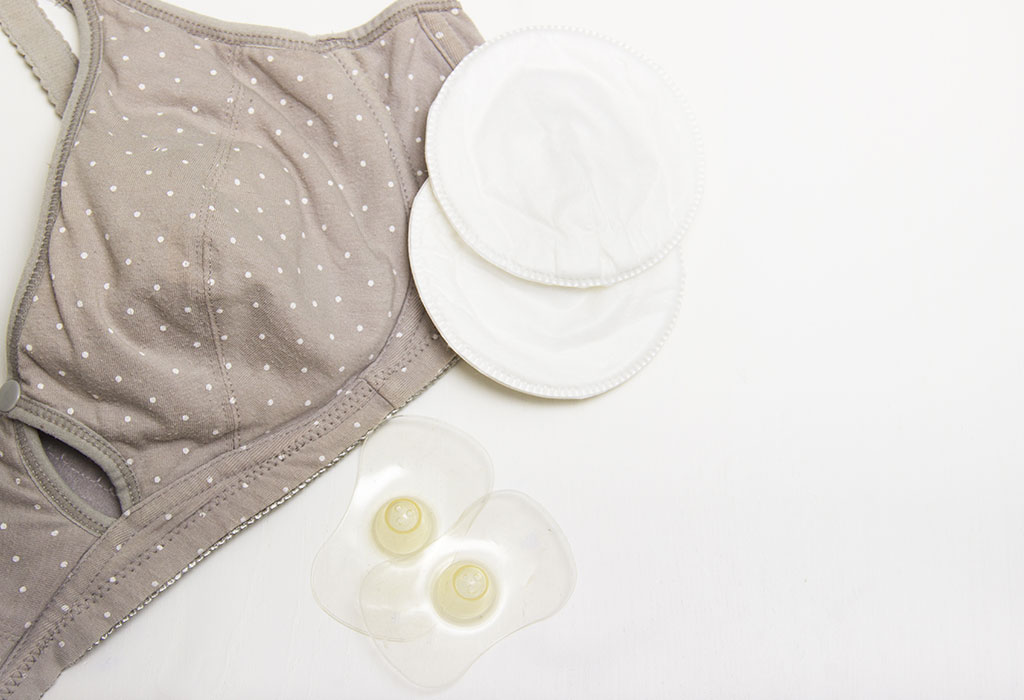In this Article
- Why Breastfeeding is Best?
- When to Start Breastfeeding?
- Preparation for Breastfeeding
- How To Start Breastfeeding A Newborn
- Comfortable Positions For Breastfeeding
- How Long To Breastfeed A Baby?
- How To Know If Your Baby Is Getting Enough Milk?
- How Many Times Should you Nurse your Baby?
- Breastfeeding After a C-Section
- What To Buy For Breastfeeding?
- Problems You May Face While Breastfeeding Your Baby
Breastfeeding is a natural, extremely essential and instinctual habit, but it also is a learning process for both mothers and babies. Breastfeeding helps build a special bond between you and your baby, besides providing protection from illnesses and ensuring adequate physical as well as mental growth for the baby.
Why Breastfeeding is Best?
Breast milk is certainly the healthiest food for the newborn. It is the best and safest meal your child can get. Here are a few reasons why breastfeeding is recommended exclusively for the first 6 months:
- Breast milk is nutrient-rich and provides a well-balanced diet for your baby’s needs.
- It consists of dozens of essential vitamins and minerals, multiple important hormones, and immunity boosting substances that are lacking in supplementary feeds or formula milk.
- Breastfeeding a newborn also has certain beneficial effects on the neurological development of the baby.
- Exclusive breastfeeding also protects the baby from various illnesses in early life, including respiratory infections like pneumonia and gastric diseases like enteritis.
- Breastfeeding can be beneficial to the mother and help her lose postpartum weight. It may also help in lowering the risk of various cancers like breast cancer and cervical cancer.
When to Start Breastfeeding?

You should start breastfeeding as soon as the baby is born, as the milk or colostrum that you produce during the first time of breastfeeding, in the first hour after giving birth, is rich in nutrients. The baby is naturally inclined to suck well in the initial hours of life and hence early feeding has a positive impact. It helps develop a good feeding relation between mother and the baby. It is a good idea to keep your baby in close skin contact, as often as possible after birth. Babies tend to exhibit actions like sucking, rooting and searching the nipple when they are laid close to the breast. When the baby has nursed a couple of times, she will learn to demand milk more often. Normal active babies will need to be fed almost hourly, including at midnight and dusk. Once your babies hunger is satisfied, she will be less irritable and will sleep soundly.
Preparation for Breastfeeding
Before starting to feed it is important that both you and the baby are in a comfortable position. There are several positions to choose from, and your nurse or health care provider is sure to help you pick one which suits you best. A comfortable position is one in which you can stay for some time. You should also be able to make eye contact with the baby while she nurses
Here are a few of the most common breastfeeding positions
- Laid-back breastfeeding: This permits you to recline so that the baby rests upon your torso.
- The Cradle Hold: You may also prefer the cradle hold, wherein you hold the baby against your chest.
- The side lying technique: This suits women whose breasts are large in size.
It is important to keep an eye on the baby as she feeds and ensure she sucks as much of the areolar tissue as possible.
How To Start Breastfeeding A Newborn
A good understanding of how to breastfeed a baby makes the job easier.
Hold your baby close to you so that the baby is facing your breasts. Touch your nipple to her upper lip and as soon as she opens the mouth, pull her onto the breast. Make sure the baby’s mouth covers most of the darker areola surrounding the nipple.

Once feeding is initiated, make sure it is not too painful. Pay attention to any tenderness after the feeds. If the baby is properly latched, a maximum part of the areola will be in the baby’s mouth and your nipples will feel the sucking.
If it hurts when the baby latches, interrupt the feeding process by sliding a finger between the mouth and the breast, detaching the baby. Once comfortable and rightly positioned, you may begin the feeding again.
Comfortable Positions For Breastfeeding
You can try out different breastfeeding positions to find one that suits your needs. Here are a few that you could consider:
1. Cradle Holding Technique
This is a common position that’s comfortable for babies who have good neck control.
- Position your baby on your lap with your tummies against each other and your elbow supporting its head
- The position should be such that the baby’s mouth stays near your breast and the arm fits in your underarm.
- Support your breast with your other hand with your thumb on the areola. Your fingers will lie beneath your breast.
- Gently let your breast touch the baby’s lower lip. Baby will open its mouth in response and try to hold the nipple by rooting.
- Support the baby over your body and permit it to latch on
Laid back feeding, is one variation in which the mother lies reclines with her baby on the torso facing the breast. The baby might take some time to learn and latch onto the breast.
2. Cradle Cross Holding Technique
This is also called the crossover hold, wherein the mother can support the baby with one of her hands.
- Hold your baby with your arm supporting her neck
- Bring her mouth close to your breast such that the arm doesn’t come in the way
- Use your hands vice versa as explained in the previous position.
- Support your breast with the free hand with your fingers placed under the breast tissue, your thumb will be on the areola.
- Gently let your breast touch the baby’s lower lip.
- Baby will open her mouth in response and try to hold the nipple by rooting.
- Support the baby over your body and permit it to latch on.
- Instead of leaning over, pull the baby over your body
3. Football Holding Technique
This is advisable for mothers who have had a Caesarean-section or those who have large breasts. It is also recommended for feeding premature babies.
- Place the baby such that your arm lies over its torso and let your hand support the baby’s neck.
- Pull the baby close to your breast and allow it to latch. Now support the baby’s head while her nose and chin touch the breast.
- Once latched and feeding, ensure that the baby’s shoulders are relaxed.
4. Modified Football Holding Technique for Twins
Mothers of twins can feed them either separately or at the same time. In the latter case, you may choose this position to allow your babies to latch onto each breast.
- With partially bent elbows hold one in each arm.
- Let your palms support their necks.
- Now allow them to attach and start sucking.
5. Side Lay Technique
This position offers comfort to the mother while feeding her newborn. It requires some skill, but once learnt and practiced, it usually is the position of choice for most mothers. It is also suitable for mothers who have had a Caesarean-section.
- Lie side by side with your tummies facing each others.
- Flexing the upper leg will help you get a comfortable position.
- Position the breast with your fingers and assist the baby to latch and start feeding itself.
How Long To Breastfeed A Baby?
Various studies and international guidelines suggest continuous exclusive breastfeeding without offering water, food supplements, fruit juices, dairy, or food for the initial six months of age. Extended breastfeeding up to a period of twelve months has also been safe and recommended.
How To Know If Your Baby Is Getting Enough Milk?
The first feed after birth usually contains colostrum instead of milk, which is a watery yellow fluid rich in antibodies that boost the baby’s immunity. It is followed by milk in a few days of regular feeding. A common concern is whether the baby is being adequately fed or not. If you are feeding her on demand and if she’s passing timely urine and about 7-8 stools/day which are yellow and semi solid, be assured that she is well-fed.
However, if the baby shows the following signs, you should consult your paediatrician:
- Baby feeds for just ten minutes or less
- You notice lethargy and frequent fussiness in the baby
- Yellowish discoloration of the skin
- Dark or greasy stools
How Many Times Should you Nurse your Baby?
There is no fixed newborn breastfeeding schedule, but usually a healthy baby feeds eight or more times a day. It is a good practice to feed whenever your baby demands. Overfeeding can be harmful and should be avoided.
A baby that’s hungry, will usually be restless, cry excessively, and suck his finger or thumb, or exhibit rooting. These signs are actually important breastfeeding tips for a new born baby which can help you know when your baby needs to be fed.
Breastfeeding After a C-Section
Breastfeeding need not be affected by a Caesarean-section. Although the physical stress of surgery and medications administered might hamper your nursing care, it is advisable that you begin frequent feeding after a few hours of birth, roughly six to twelve hours. Once begun, milk letdown will ensue and feeding shouldn’t be a problem. You can take help from your partner to position your baby. Cradle holding, side-lay technique or the football holding positions can be chosen for comfort.
1. What Food Should Breastfeeding Mothers Should Eat?
A breastfeeding mother requires nothing special but a well balanced diet that includes:

- Starch items, bread, rice and potato
- Prefer whole wheat products for added fibre and extra nutrients
- Dairy products like, milk and yogurts
- Protein rich foods like, meat, eggs and fishes
- Fresh fruits and clean vegetables
- Adequate intake of water and fluids
Under all circumstances, a breastfeeding mother should refrain from smoking and alcohol consumption.
What To Buy For Breastfeeding?
Nursing bras are advisable, as they support your breasts well. With zips and hooks it becomes comfortable for frequent feeding. Ensure you use well fitted bras with completely opening flaps. In cases the breast is inadequately exposed or the pads are pressing on the breast it may block the ducts causing mastitis (inflammation of the breast tissue).

Your breasts may leak due to oxytocin response. Carry reusable breast pads when travelling, to keep yourself dry and comfortable. Night wear light bras are also available. A breast pump can be helpful in cases where expressed milk is required.
Problems You May Face While Breastfeeding Your Baby
Breastfeeding can be difficult in the following circumstances:
- You may develop a breast infection(mastitis) or plugged ducts.
- Improper ‘latching on’ of the baby.
- Breast engorgement or painful nipples, especially in the initial weeks. Remember breastfeeding should be painless.
- The baby is days to weeks old but does not require 7-8 diapers a day.
- The baby is drowsy or excessively lethargic, feeding only less than 8 times a day.
- Medical conditions like, prematurity, failure to thrive, pathological jaundice, congenital defects like cleft palate or lip, or neuro-developmental problems.
- With proper help and support from your doctor, these problems can be resolved and help you continue breastfeeding for your baby’s good health.
Breastfeeding is an essential art for a new mother. With patience, practice and awareness, feeding your baby can be accomplished in a hassle free way. Once you get used to it, you will find that breast milk is the best thing a mother can give her newborn baby, since it ensures the pink of health.










